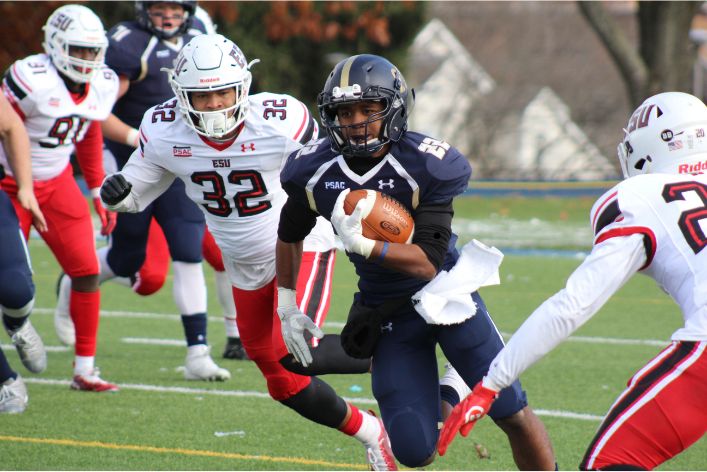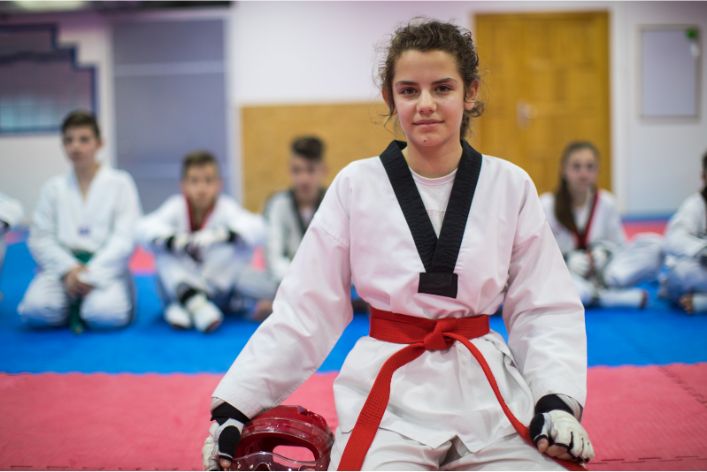Last Updated on May 9, 2023
Storytelling is a fundamental part of human culture that dates back thousands of years. From cave paintings to epic poems, storytelling has been used to entertain, educate, and inspire generations of people.
In today’s digital age, the art of storytelling has taken on many different forms, from books to podcasts to movies and beyond.
In this blog post, we will explore the power of storytelling, the different mediums of storytelling, and the art of effective storytelling across these various media.
The Power of Storytelling

Storytelling has been a part of human culture for as long as humans have been able to communicate. Before writing’s advent, people passed down stories orally from generation to generation.
These stories often had moral lessons or were used to explain natural phenomena. When writing emerged, people recorded stories in written form, enabling preservation and sharing across great distances.
Storytelling has a profound impact on our brains. As we listen to a story, our brains release dopamine, a chemical associated with pleasure and reward. This makes us more engaged with the story and helps us to remember it better.
Storytelling also activates different parts of our brain, including the visual cortex and the language centres. This makes stories more memorable than just plain facts or information.
Storytelling has often been used as a tool for social change. Harriet Beecher Stowe’s Uncle Tom’s Cabin fueled the abolitionist movement, while Upton Sinclair’s The Jungle exposed horrific conditions in the meatpacking industry. These stories actively shone a light on injustices and inspired people to take action.

The Art of Storytelling Through Books
A good story has several key elements that work together to create a compelling narrative. These elements include a strong plot, well-developed characters, vivid descriptions, and a clear theme.
A strong plot
A strong plot is the backbone of a good story. It is the sequence of events that drives the narrative forward and keeps the reader engaged. It is built on a clear conflict or problem that the characters must face and overcome.
The plot should have a clear beginning, middle, and end, and should include a series of rising and falling actions that create tension and momentum. A strong plot should also be unpredictable enough to keep the reader guessing, but not so convoluted that it becomes confusing.
Well-developed characters
Well-developed characters are the heart of a good story. They are the people or creatures that the reader cares about and empathizes with, and they drive the plot forward through their actions and decisions.
Characters should have distinct personalities, backgrounds, and motivations, and should be consistent in their behavior throughout the story. They should also grow and change over the course of the story, as they face challenges and learn important lessons.
A good storyteller should create characters that are believable, relatable, and engaging, and that the reader can invest in emotionally.
Vivid descriptions
Vivid descriptions are essential in creating a compelling and immersive story. They help the reader visualize the setting, characters, and events of the story, and create a sense of atmosphere and mood.
They should engage all of the reader’s senses, using descriptive language to evoke sounds, smells, textures, and emotions. A good storyteller should use descriptions to paint a picture in the reader’s mind, without overloading them with unnecessary details.
Read: Top 10 Producers in the Producers Guild of America
A clear theme
A clear theme is the underlying message or idea that a good story communicates to the reader. It is the moral or lesson that the reader takes away from the story, and it ties the plot, characters, and setting together in a meaningful way. The theme should be evident throughout the story, without being heavy-handed or didactic.
A good storyteller should use the story to explore a universal human experience or emotion and to provoke thought and reflection in the reader.
Different genres of books
There are many different genres of books, each with its own unique style and audience. Some popular genres include romance, science fiction, mystery, horror, and fantasy.
Each genre has its own conventions and expectations, and a good storyteller must be able to understand and work within these conventions to create a compelling story.
Tips for effective storytelling in books
To be an effective storyteller in books, it is important to create a strong plot with interesting characters and a clear theme. It is also important to use descriptive language to create a vivid sense of place and atmosphere. A good storyteller should also pay attention to pacing. This means making sure the story is moving at a steady pace and there are no unnecessary digressions or distractions.
Finally, a good storyteller should be able to write in a way that is engaging and easy to read, using language that is appropriate for the intended audience.

The Rise of Audio Storytelling
Radio has been around for over a century, and audio storytelling has been an important part of radio programming from the beginning. From the early days of radio dramas to the modern podcast boom, audio storytelling has evolved and adapted to changing technology and audience preferences.
There are many different types of audio storytelling, including radio dramas, audiobooks, and podcasts. Each type of audio storytelling has its own unique strengths and challenges, and a good storyteller must be able to work within the limitations of the medium to create a compelling story.
Tips for effective storytelling in podcasts
To be an effective storyteller in podcasts, it is important to create a clear narrative structure with a strong beginning, middle, and end. It is also important to use sound design to create a sense of place and atmosphere, as well as to create a rhythm and pacing that keeps the listener engaged.
A good storyteller should also be able to use their voice effectively, using tone, inflexion, and emphasis to convey emotion and create a connection with the listener.
Related: Have Podcasts Replaced Radio?

The Visual Art of Storytelling
Visual storytelling has been around for thousands of years, from cave paintings to hieroglyphics to medieval tapestries. With the advent of photography and film, visual storytelling has become an even more powerful and influential medium.
Related: Africa’s Film Industry: Exploring the Growth of Nollywood and Other African Film Industries
The Different Types of Visual Storytelling
Many types of visual storytelling exist, including film, television, animation, and graphic novels.
Film
A film is a form of visual storytelling that uses moving images, sound, and music to convey a story or message. Films may be produced for entertainment or artistic purposes and can range in length from a few minutes to several hours.
A film’s story may be told through dialogue, action, and visual imagery, and may involve a range of genres such as drama, comedy, and action.
Related: The Role of Film Festivals on the Entertainment Industry
Television
Television is another popular form of visual storytelling that uses moving images and sound to convey a story or message. TV programs may be produced for broadcast, cable, or streaming services, and can range from sitcoms to dramas to news programs.
Television storytelling may involve serialized narratives that unfold over multiple episodes or seasons, and may also incorporate elements of other storytelling mediums such as film or literature.
Related: Differences Between a Film and a TV Series
Animation
Animation is a form of visual storytelling that uses drawings, computer-generated images, or puppets to create the illusion of movement. They may be produced for entertainment or educational purposes and can range in length from short films to feature-length productions.
Animation storytelling may involve a variety of genres such as comedy, adventure, or drama, and may also incorporate elements of other storytelling mediums such as literature or film.
Graphic Novels
Graphic novels are a form of visual storytelling that combines images and text to convey a story or message. They may be produced for entertainment or educational purposes and can range in length from a few pages to hundreds of pages. Graphic novels may involve a range of genres such as superhero stories, memoirs, or historical fiction.
A graphic novel’s storytelling may involve a combination of text, dialogue, and visual imagery, and may also incorporate techniques such as panel design and layout to create a visually stunning and emotionally impactful story.
Each type of visual storytelling has its own unique strengths and challenges, and a good storyteller must be able to work within the limitations of the medium to create a compelling story.
Tips for effective storytelling in Film and TV
To be an effective storyteller in film and TV, it is important to create a clear narrative structure with well-developed characters and a compelling plot. It is also important to use visual elements such as lighting, composition, and camera angles to create a sense of place and atmosphere.
A good storyteller should also be able to work effectively with actors, using their performances to convey emotion and create a connection with the audience.
Related: What is the Role of an Executive Producer in a Film and TV Series?
Storytelling in the Digital Age
The digital age has had a profound impact on storytelling, opening up new possibilities and challenges for storytellers. Digital technology has made creating and distributing stories easier than ever. However, it has also created new challenges around issues such as copyright, and piracy.
The digital age has also seen the emergence of new mediums for storytelling, like social media or video games. Each of these media has its own unique strengths and challenges, and a good storyteller must be able to adapt to these new mediums to create a compelling story.
The future of storytelling is constantly evolving, with new technologies and mediums emerging all the time. As artificial intelligence and machine learning become more advanced, it is likely that they will play an increasingly important role in the creation and distribution of stories.
However, no matter how much technology evolves, the fundamental elements of storytelling will remain essential.
Conclusion
Storytelling is a powerful and important part of human culture and has taken on many different forms throughout history. From books to podcasts to movies and beyond, storytelling has evolved and adapted to changing technology and audience preferences.
No matter what form it takes, however, effective storytelling requires a clear narrative structure, well-developed characters, and a compelling plot.
As we move into the digital age, it is likely that storytelling will continue to evolve and adapt to new technologies and media. However, the fundamental elements of a good story will remain the same. So go out and explore the art of storytelling. Whether it’s through books, podcasts, movies, or some other medium – and maybe even create a story of your own.
Before You Go…
Hey, thank you for reading this blog to the end. I hope it was helpful. Let me tell you a little bit about Nicholas Idoko Technologies. We help businesses and companies build an online presence by developing web, mobile, desktop, and blockchain applications.
We also help aspiring software developers and programmers learn the skills they need to have a successful career. Take your first step to becoming a programming boss by joining our Learn To Code academy today!
Be sure to contact us if you need more information or have any questions! We are readily available.










